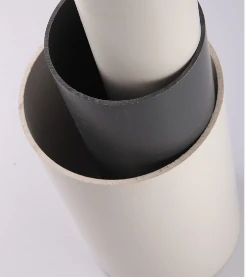Dhj . 31, 2024 20:12 Back to list
Exploring the Latest Innovations in PP Board Technology and Applications
Understanding PP Board Applications and Advantages
PP board, also known as polypropylene board, is a versatile plastic sheet that has gained popularity in various industries due to its exceptional properties. This lightweight material is made from polypropylene, a thermoplastic polymer known for its resilience, chemical resistance, and durability. As industries continue to evolve, the demand for efficient and sustainable materials rises, making PP board an ideal choice for many applications.
One of the standout features of PP board is its lightweight nature. This attribute not only makes it easy to handle and transport but also reduces shipping costs for manufacturers and end-users. The low weight does not compromise its strength, as PP board offers impressive impact resistance. This characteristic makes it suitable for applications that require durability, such as signage, packaging, and even construction.
In the advertising and marketing sectors, PP board has become a popular choice for creating signs, displays, and promotional materials. Its smooth surface allows for high-quality printing, enabling vibrant colors and sharp graphics. This capability is particularly important for businesses looking to create eye-catching advertisements that stand out in crowded markets. Moreover, the weather-resistant properties of PP board ensure that outdoor displays remain intact despite exposure to varying environmental conditions.
Another significant advantage of PP board is its chemical resistance. This makes the material suitable for use in environments where contact with solvents, acids, or alkalis may occur. Industries such as chemical processing, food packaging, and healthcare benefit from using PP board due to its inert nature, allowing for safe storage and transportation of various substances.
pp board

The sustainability factor of PP board is also noteworthy. As environmental concerns grow, many companies seek eco-friendly materials. Polypropylene is recyclable, and the production process can be managed to reduce waste and energy use. By choosing PP board, businesses can contribute to sustainability efforts while still meeting their operational needs. Furthermore, the material can be manufactured in various thicknesses and forms, allowing for tailored solutions that minimize waste.
In construction and manufacturing, PP board is often used as a lightweight alternative to traditional materials like wood or metal. Its resistance to moisture makes it an effective choice for applications where exposure to water is a concern. Additionally, PP board can be easily fabricated and transformed into various shapes, making it an ideal choice for custom projects.
In the realm of education and art, PP board provides a reliable medium for various creative projects. Artists and students frequently use it for crafting, prototyping, and constructing models. Its ease of cutting, folding, and bonding allows users to bring their ideas to life with minimal effort. Schools and community organizations often incorporate PP boards in workshops and activities, promoting creativity and hands-on learning experiences.
In summary, PP board is a remarkable material that offers numerous advantages across multiple sectors. Its lightweight, durable, and chemical-resistant properties make it a preferred choice for applications ranging from signage and packaging to construction and education. The sustainability aspect, combined with the versatility of the material, ensures that PP board remains relevant in a fast-paced and environmentally conscious market. As industries continue to innovate and adapt, PP board stands out as a reliable solution, catering to a wide array of needs while promoting efficiency and sustainability. Whether in manufacturing, marketing, or creative endeavors, the applications of PP board are vast, making it an indispensable product in today's world.
-
PVC Grey Sheet for Extraction: Chemical Resistant & Durable
NewsAug.19,2025
-
Durable PVC Pipe Fittings for Plumbing & Irrigation Needs
NewsAug.18,2025
-
HDPE Steel Belt Reinforced Spiral Corrugated Pipe | High Strength
NewsAug.17,2025
-
HDPE Pipe Fittings: Durable, Leak-Proof Solutions
NewsAug.16,2025
-
Premium CPVC Sheet: High-Temp & Chemical Resistant Solutions
NewsAug.15,2025
-
Durable PPR Pipe for Hot & Cold Water Systems - Easy Install
NewsAug.14,2025

